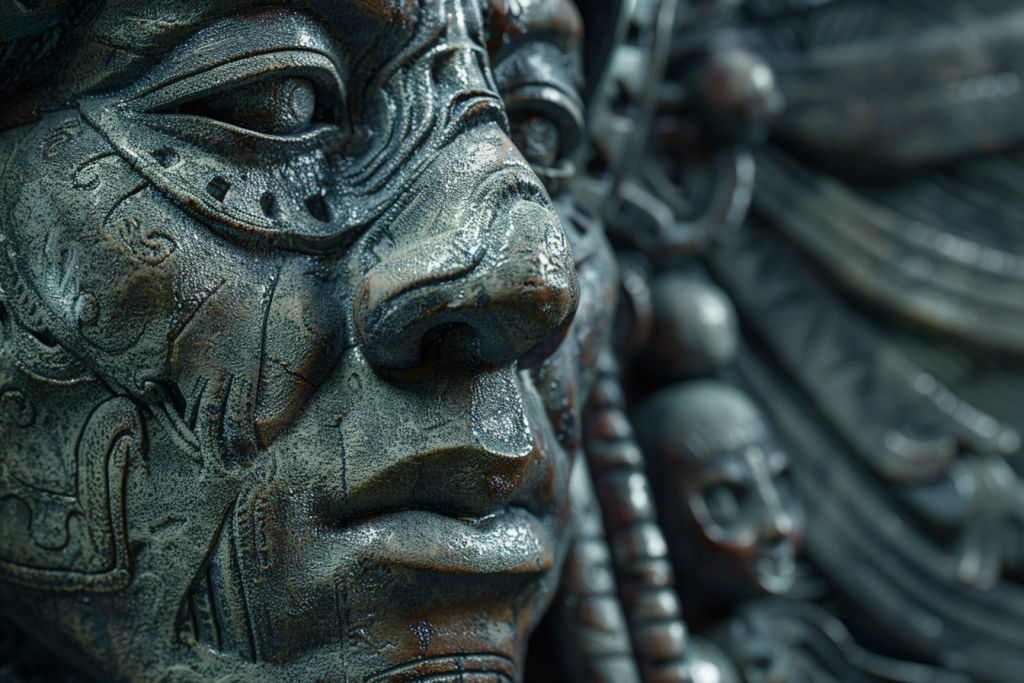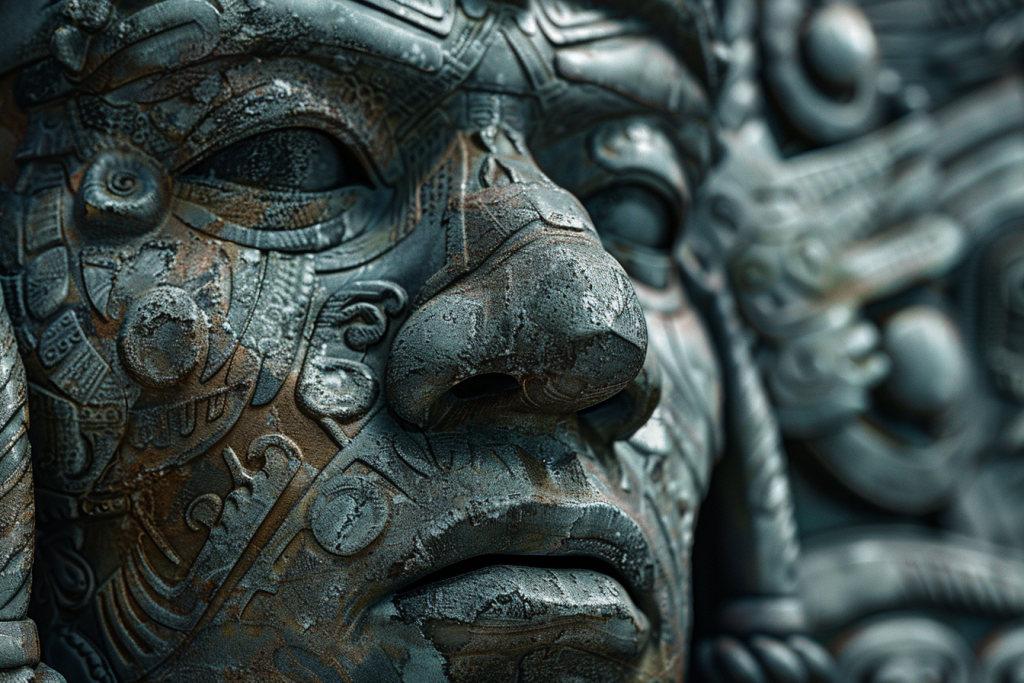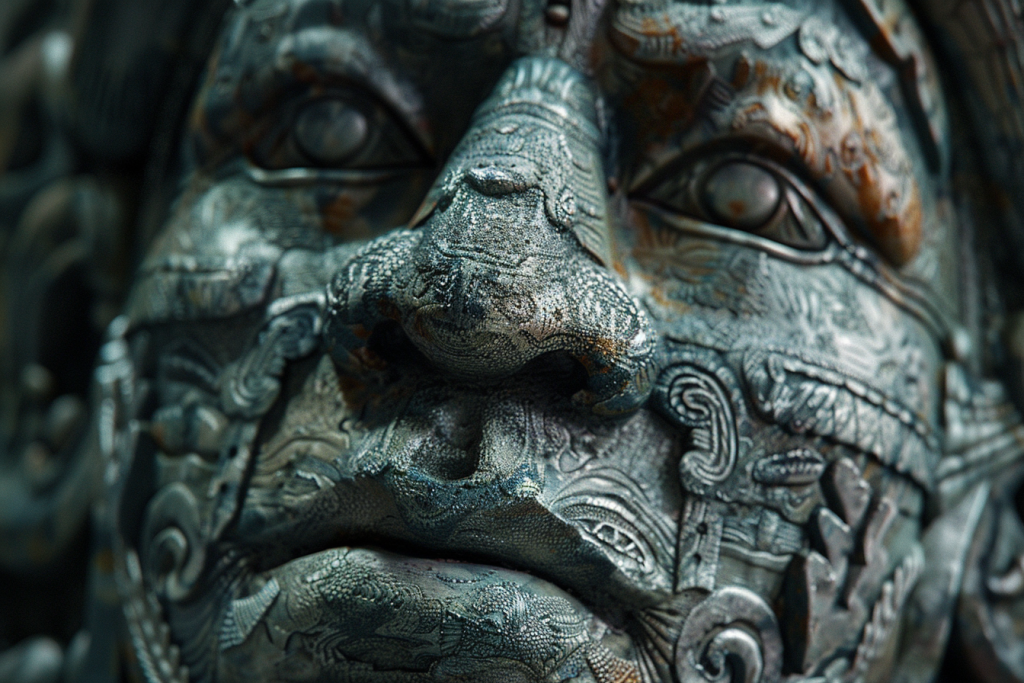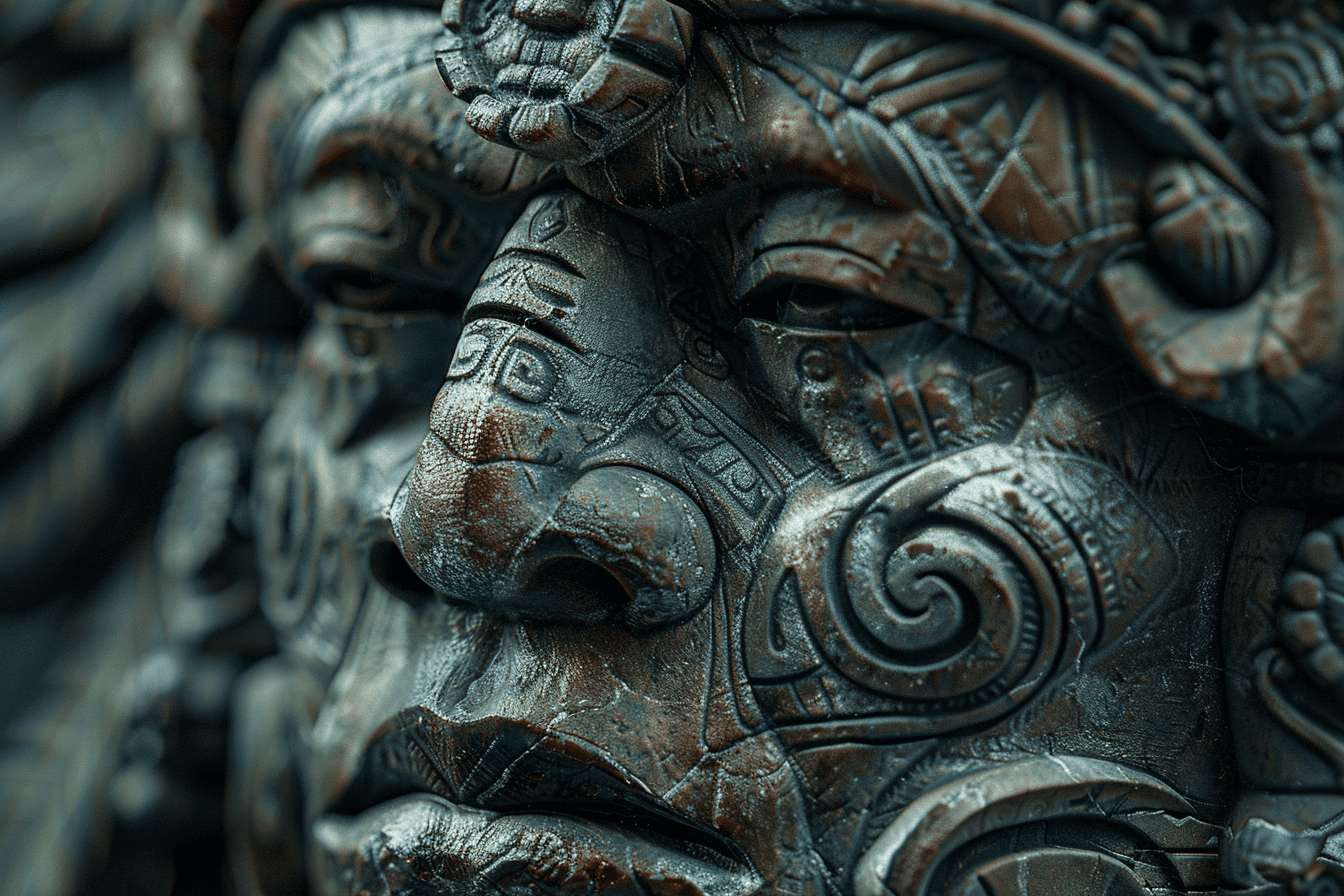Overview of Ah Puch
Ah Puch, known in the Maya civilization as the god of death, holds a significant place in the pantheon of Mayan deities. His presence is a testament to the complex relationship the ancient Maya had with the concept of death and the afterlife. The etymology of Ah Puch’s name is somewhat debated among scholars, but it is often associated with a sound that mimics the rattle of bones, a fitting imagery for the deity of death. In the Mayan pantheon, Ah Puch’s role was not just to oversee the dead but also to govern over the darker aspects of the human experience, including decay and disaster.
Get your dose of History via Email
Mythology and Legends
Origin Stories
The mythology surrounding Ah Puch is rich and varied, with several origin stories that differ among the regions of the Maya civilization. In some tales, Ah Puch is depicted as a being who was always a part of the Mayan cosmology, a fundamental force of the universe. In others, he is a deity who earned his place in the pantheon through acts that tied him irrevocably to the realm of the dead.
Major Myths Involving Ah Puch
One of the most compelling myths about Ah Puch involves his battles with the Hero Twins, Hunahpu and Xbalanque, which are detailed in the Popol Vuh, a sacred Mayan text. These stories depict Ah Puch as a formidable adversary who is ultimately tricked and defeated by the twins, symbolizing the eternal struggle between life and death. Another myth portrays Ah Puch leading a host of lesser death gods, known collectively as the Cizin or “flatulent ones,” indicating a less solemn and more approachable view of death in some aspects of Mayan culture.

Influence on Mayan Society
Fear and Reverence: Societal Attitudes Towards Death
In Mayan society, Ah Puch was both feared and revered, embodying the duality of death as both an end and a transformation. This duality influenced the Mayan perception of death, leading to a culture that, while wary of the end of life, also respected it as a necessary passage.
Ah Puch’s Role in Festivals and Public Life
Ah Puch played a significant role in Mayan festivals and public life, particularly in ceremonies that commemorated the dead. These events served both to honor Ah Puch and to appease him, in the hope of ensuring a peaceful transition for the souls of the departed.
Death Rituals and Beliefs Influenced by Ah Puch
The influence of Ah Puch on Mayan death rituals and beliefs was profound. The Maya practiced elaborate burial rites, which included offerings to Ah Puch to secure a favorable reception for the deceased in the afterlife. The presence of grave goods, intended for use in the next world, reflects the belief in a continued existence after death, overseen by Ah Puch.

Ah Puch in Literature and Art
References in Mayan Codices and Inscriptions
Ah Puch features prominently in the surviving Mayan codices and various inscriptions, where he is often depicted in a skeletal form, adorned with bells and wearing a collar made of eyes. These images serve as a reminder of his dominion over death and the afterlife.
Depictions in Mayan Art and Sculpture
In Mayan art and sculpture, Ah Puch is frequently shown in a macabre light, with motifs that emphasize his connection to death and decay. However, these depictions also include elements that suggest a protective aspect, indicating his role as a guardian of the dead.

Influence on Contemporary Literature and Media
The figure of Ah Puch has transcended ancient Mayan culture, influencing contemporary literature and media. He appears in various forms in modern works, from novels to video games, where he is often reimagined to fit new narratives while still retaining his core attributes as the Maya god of death. This enduring legacy highlights the lasting impact of Mayan mythology on popular culture.

